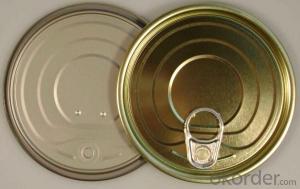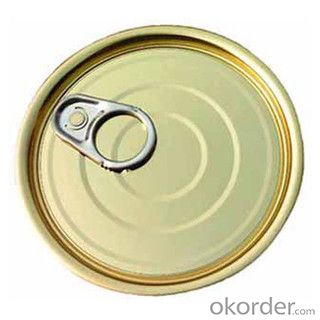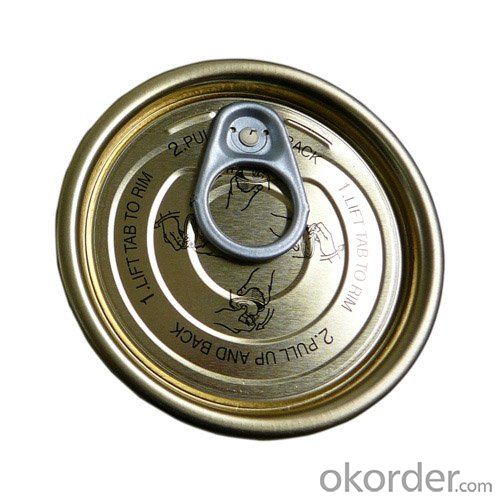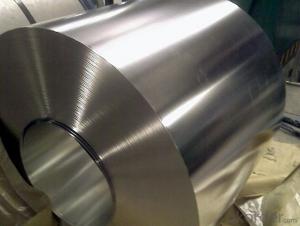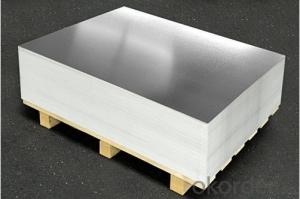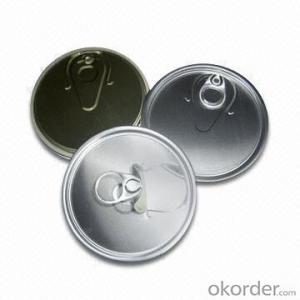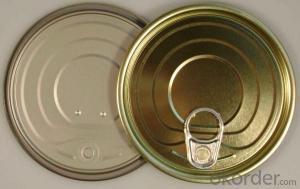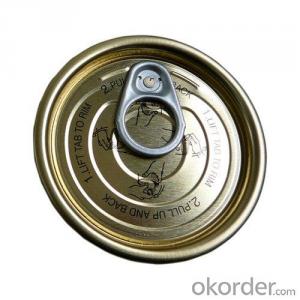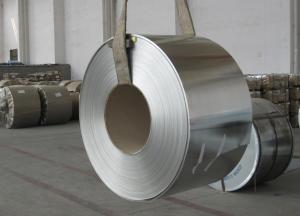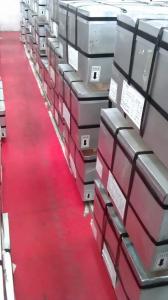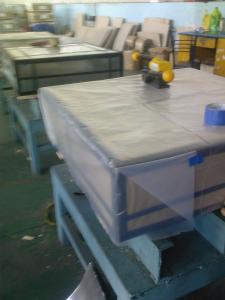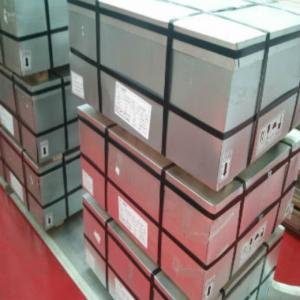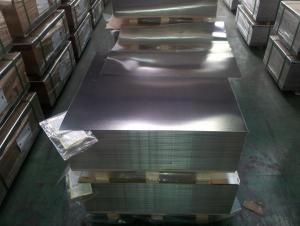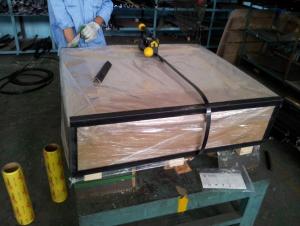EOE Can Lid For Sauce Can 307#,High Quality
- Loading Port:
- Guangzhou
- Payment Terms:
- TT OR LC
- Min Order Qty:
- 1380000 pc
- Supply Capability:
- 100000000 pc/month
OKorder Service Pledge
OKorder Financial Service
You Might Also Like
Specification
Specifications
| Name | EOE |
| Item No. | 307# |
| Shape/type | Round |
| Size(mm) | Dia 83.3 |
| Coating | Aluminized |
| Material | Tinplate |
| Pcs/20 GP’ | 1,380,000 Customize packing: as clients’ requests. |
| Features | 1.Used for packaging of tomato paste,jam,salad…etc. 2.Have illustration printingon the lid. 3.Coating can be according to the customer required |
Packaging & Delivery
| Packaging Details: | carton, carton+pallet,depend on clients'requirement |
| Delivery Detail: | 1month |
Our Workshop
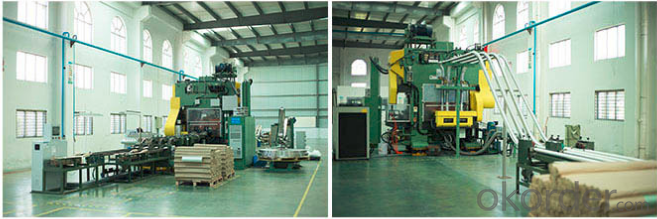
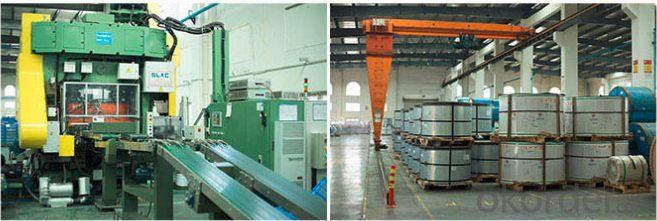
FAQ
1.Q: What is the material of EOE?
We can offer both tinplate and aluminum material made EOE upon customer request;
2. Q: What’s the usage of EOE?
It mainly be used in food area, such as milk powder, dry food, drink etc.
2.Q:Whether sample is available for testing?
Surely we could offer about 200~300 pcs for testing;
3. Q: Please give more details about your company
Our company, CNBM International Corporation, is one large state owned company also Fortune Global 500 company in the world. For more details please search our company website.
4.What’s the loading port?
Main Port in China
- Q: How is tinplate coated with polymer films?
- Tinplate is coated with polymer films through a process called extrusion coating or lamination. In extrusion coating, a molten polymer is extruded onto the surface of the tinplate, forming a thin film after cooling. Lamination involves bonding a pre-made polymer film onto the tinplate using heat and pressure. Both methods provide a protective barrier and enhance the corrosion resistance of the tinplate.
- Q: And what are the main packing materials?
- The difference between the two cans is usually called a tin plate of three cans. The material is usually made of tin and hence its name. Canned container used for beverage, dry powder, chemical product, aerosol product.
- Q: How is tinplate used in the wine and spirits industry?
- Tinplate is commonly used in the wine and spirits industry for packaging purposes. It is often used to make metal cans or containers that hold wine and spirits. Tinplate helps to ensure the integrity and longevity of the product by providing a protective barrier against light, oxygen, and other external factors that can affect the quality and taste of the beverage. Additionally, tinplate can be decorated with various designs and branding, enhancing the overall aesthetic appeal of the packaging.
- Q: How does tinplate packaging contribute to product portion control?
- Tinplate packaging contributes to product portion control by providing a pre-determined size and shape for the product. The rigid structure of tinplate containers ensures that a specific quantity of the product is packaged, enabling consumers to easily manage their portions and avoid overconsumption.
- Q: How does tinplate compare to glass in terms of packaging applications?
- Tinplate and glass have distinct advantages and disadvantages for packaging applications. Tinplate offers superior durability, resistance to corrosion, and can be easily formed into various shapes and sizes, making it suitable for canned food, beverages, and aerosol packaging. On the other hand, glass provides an elegant appearance, is chemically inert, and preserves the taste and quality of its contents. However, glass is fragile, heavier, and more expensive to produce and transport than tinplate. Therefore, the choice between tinplate and glass for packaging applications depends on factors such as product compatibility, cost, and customer preferences.
- Q: Can tinplate be used for packaging beverages?
- Yes, tinplate can be used for packaging beverages. Tinplate is a type of steel coated with a layer of tin, which provides excellent protection against corrosion and acts as a barrier against light, oxygen, and moisture. This makes it an ideal material for packaging beverages, as it helps to maintain the quality, freshness, and shelf life of the product. Additionally, tinplate cans are lightweight, durable, and recyclable, making them a sustainable choice for beverage packaging.
- Q: What are the advantages of using tinplate for gift packaging?
- One of the advantages of using tinplate for gift packaging is its durability. Tinplate is a strong material that can withstand impact and protect the contents of the gift. Additionally, tinplate is resistant to corrosion, ensuring that the packaging remains intact and attractive even over time. Another advantage is its versatility - tinplate can be easily customized and decorated, allowing for endless design possibilities. Furthermore, tinplate is recyclable, making it an environmentally friendly choice for gift packaging.
- Q: How does tinplate affect the cost of packaging?
- Tinplate can increase the cost of packaging due to its higher manufacturing and material expenses compared to other packaging materials such as aluminum or plastic. However, it offers various benefits like excellent durability, corrosion resistance, and ability to keep the contents fresh, which can justify the higher cost for certain products.
- Q: What are the advantages of using tinplate for medical packaging?
- There are several advantages of using tinplate for medical packaging. Firstly, tinplate is highly resistant to corrosion, ensuring the integrity and sterility of medical products. It provides a protective barrier against moisture, oxygen, and light, preserving the efficacy and shelf life of medications and medical devices. Additionally, tinplate is durable and can withstand rough handling during transportation without compromising the contents. Its versatility allows for various shapes and sizes of packaging, making it suitable for a wide range of medical products. Lastly, tinplate is recyclable, making it an environmentally friendly choice for sustainable packaging solutions.
- Q: The composition of tinplate?
- There are other statements, such as China used this lamp tin plate made of kerosene, shaped like a horse, so called "tin".
Send your message to us
EOE Can Lid For Sauce Can 307#,High Quality
- Loading Port:
- Guangzhou
- Payment Terms:
- TT OR LC
- Min Order Qty:
- 1380000 pc
- Supply Capability:
- 100000000 pc/month
OKorder Service Pledge
OKorder Financial Service
Similar products
Hot products
Hot Searches
Related keywords
